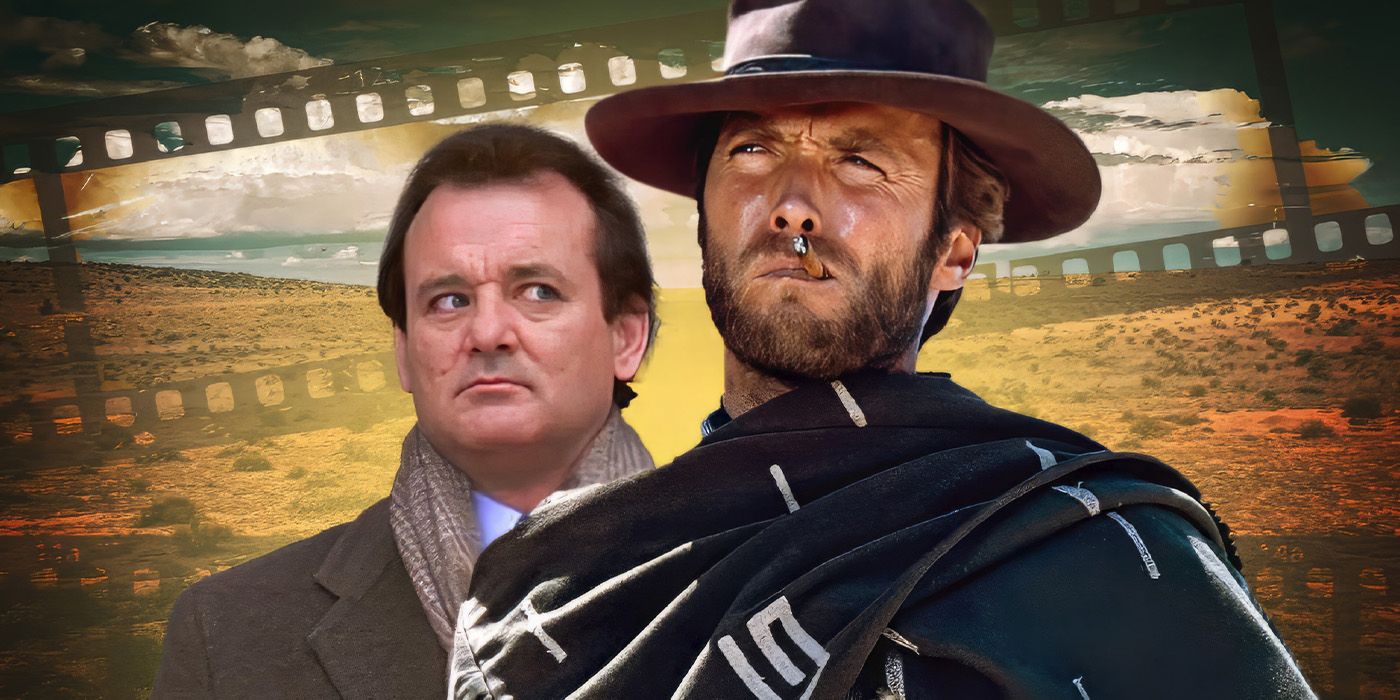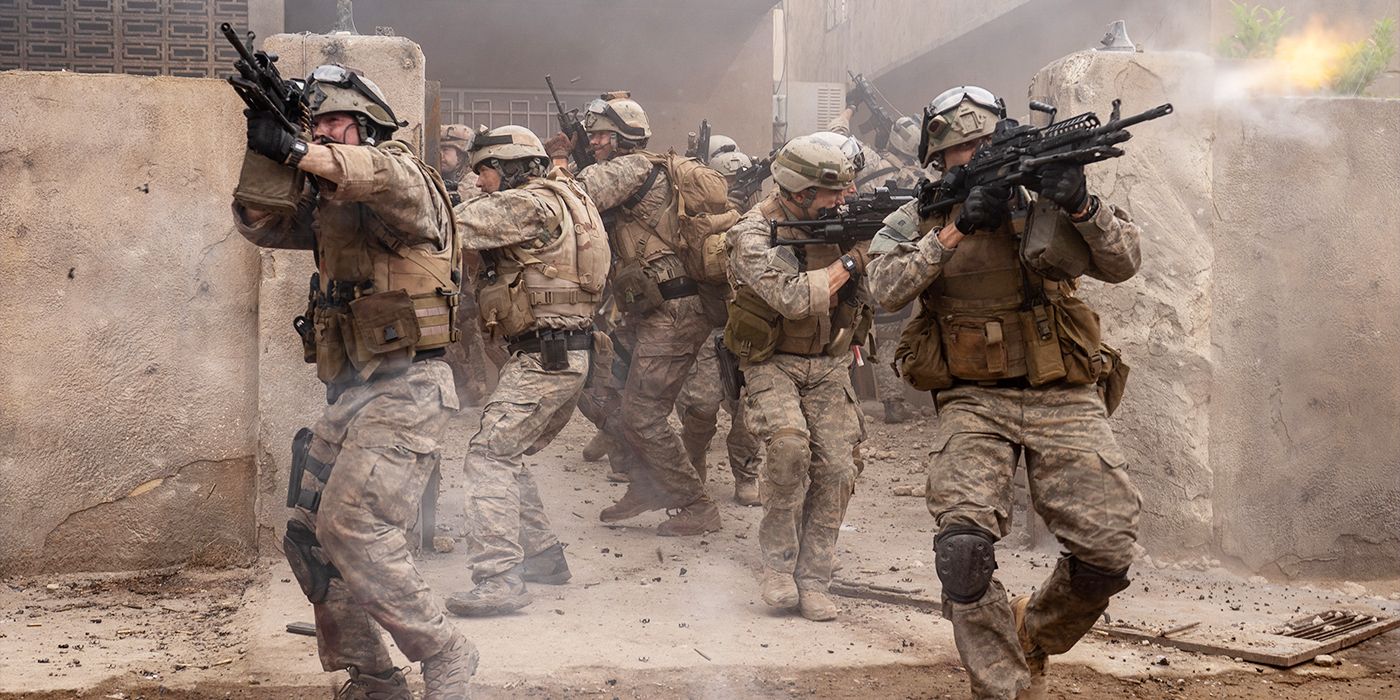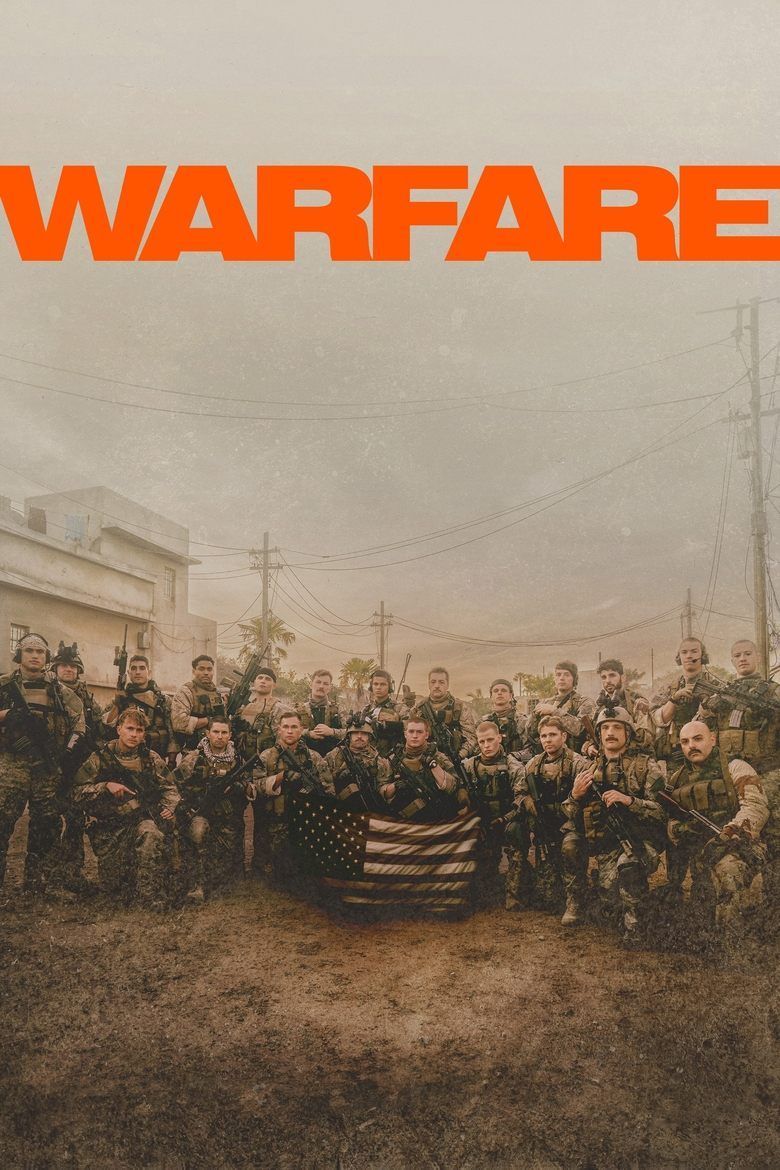
What Happens During ‘Warfare’s IED Explosion?
After an extended prologue in which the various members of the Navy SEAL Team Alpha One anticipate an attack on the house they’ve occupied, they are finally given the green light to exit the house. Unfortunately, right as they leave, an IED goes off in the street, which leaves most of the SEAL members either gruesomely injured or deeply concussed and shaken up. Sniper Elliot Miller (Cosmo Jarvis) is left with a severe compound fracture of the leg, while petty officer Sam (Joseph Quinn) has both of his legs with deep tissue damage in the upper thigh and groin regions, and the officer in charge, Erik (Will Poulter), is basically concussed and unable to lead anymore.
The rest of the men must fend for themselves as a unit and wait out the attacks until their backup can arrive to save them, in a last-ditch effort that will require all of their iron will and focus to survive. What makes this whole sequence so powerful is that recovering from this explosion winds up lasting the majority of the runtime of the film’s second half, showing how vastly diminished the cost of violence in traditional war films is in comparison to the real thing. If the cast and crew needed any more validation on how much they had captured the real feeling of this sensation, they had the real veterans involved in the film’s events to confirm what they’d created.
The Sound Design Was Key To Capturing the Horror in ‘Warfare’
In a piece from Variety on how the crew captured the IED explosion moment on set, Oscar-winning prosthetics designer Tristan Versluis discussed how the actual Elliott Miller was on set and supervising when they filmed that sequence. Versluis spoke of the sheer terror of having him on set and having to relive the most traumatic day of his life, saying that “it was also quite upsetting because it was the first time he’s revisited that moment…To have one of the real soldiers come and revisit this horrific day — I’ve never had that experience before. That was once in a lifetime.” They were able to effectively render the full trauma of the moment, partially by focusing on the sound design, inspired by co-director Ray Mendoza‘s “memory about how different explosions sound: some of them have a crack, some of them have more of a boom-y impact.” Sound designer Glenn Freemantle added that they honed in on “getting that really tight sound on the IED impact, the metal, and the phosphorus. And the weight, how the sound wave would hit them, and the air pressure as well, not only in that moment, but it was also when the guns fired.” While Miller’s actual response to witnessing all of this isn’t quoted in the article, Versluis does say that it was “powerful” to witness, and based on the various quotes of Mendoza, they got the job done.
The Involvement of the Veterans Was Vital for ‘Warfare’
In a separate piece from The Wrap, Mendoza discussed how Miller was on set and got extremely overwhelmed by having to witness it all be recreated in such vivid detail. He spoke about how “It was just right – the amount of smoke, the sound, the look, the scream, the struggle that he was having, the grunts that he was making…It triggered these 20 years of trying to figure out how to coexist with his memory.”

Related
Bill Murray Passed on Making a Clint Eastwood War Movie — and His Reason Makes Total Sense
We can’t really blame him.
It all became so much that not only did Miller leave the set, but Mendoza also left, with Alex Garland having to finish directing Warfare the rest of the day. This was a small snapshot of how much of the experience of shooting was, with Garland saying that “…there were other people who’d been involved in this incident, who were coming and either observing or making their own contributions of their memories of a particular moment…Everybody wanted to get this right. For Ray and the other guys that were there. Everybody went above and beyond.” That collective brotherhood, from the veterans to the actors playing them to the directors and crew, was the key to making Warfare a far more accurate depiction of war than what audiences are usually prepared for.
About The Author
Discover more from imd369
Subscribe to get the latest posts sent to your email.







